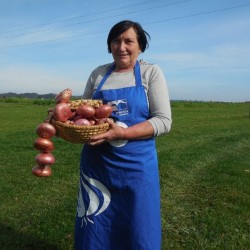Menu
-
MenuBack
- Home
-
Categories
-
-
Categories
-
Vegetable Seeds
-
Varieties by Country
- Varieties from Armenia
- Varieties from BiH
- Varieties from Croatia
- Varieties from France
- Varieties from Germany
- Varieties from Greece
- Varieties from Hungary
- Varieties from India
- Varieties from Italy
- Varieties from Japan
- Varieties from North Macedonia
- Varieties from Peru
- Varieties from Russia
- Varieties from Serbia
- Varieties from Slovenia
- Varieties from Spain
- Varieties from Thailand
- Varieties from Turkey
- Varieties from USA
- Tomato Seeds
- Corn Seeds
- Gourd family
- Bean family
- Cucumber Seeds
- Pepper Seeds
- Carrot family
- Onion family
- Lettuce Seeds
- Potato family
- Cabbage family
- Radish Seeds
- Beetroot family
- Watermelon Seeds
- Melon Seeds
- Cauliflower Seeds
- Sunflower family
-
Varieties by Country
- Fruit Seeds
- Chili - Habanero Seeds
- Medicinal Herb Seeds
- Climbing Plants Seeds
- Trees Bonsai Seeds
- Palm Seeds
- Ornamental Grasses Seeds
- Tobacco Seeds
-
Vegetable Seeds
-
-
-
-
- NEW PRODUCTS
- Create account
- Delivery - Payment
- FAQ
- Vegetable Seeds
-
- Varieties by Country
- Varieties from Armenia
- Varieties from BiH
- Varieties from Croatia
- Varieties from France
- Varieties from Germany
- Varieties from Greece
- Varieties from Hungary
- Varieties from India
- Varieties from Italy
- Varieties from Japan
- Varieties from North Macedonia
- Varieties from Peru
- Varieties from Russia
- Varieties from Serbia
- Varieties from Slovenia
- Varieties from Spain
- Varieties from Thailand
- Varieties from Turkey
- Varieties from USA
- Tomato Seeds
- Corn Seeds
- Gourd family
- Bean family
- Cucumber Seeds
- Pepper Seeds
- Carrot family
- Onion family
- Lettuce Seeds
- Potato family
- Cabbage family
- Radish Seeds
- Beetroot family
- Watermelon Seeds
- Melon Seeds
- Cauliflower Seeds
- Sunflower family
- Varieties by Country
Last Product Reviews
Out of the two seeds, one germinated and the other one was dead and floatin...
By
 Riikka H on 07/03/2024
Riikka H on 07/03/2024
Verified Purchase
There are 817 products.
Showing 766-780 of 817 item(s)
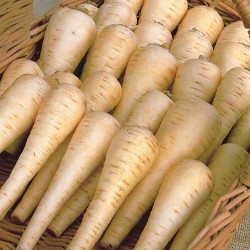
Pannonian smooth parsnip seeds
Price
€1.55
(SKU: VE 30 P (1g))
Seeds Gallery EU,
5/
5
<h2><strong>Pannonian smooth parsnip seeds</strong></h2>
<h2><span style="color: #fd0000;"><strong>Price for Package of 150 (1g) seeds.</strong></span></h2>
<div class="">Pannonian smooth parsnip is a slightly aromatic spice plant in which only the root is used. Spindle root has a specific aroma that is used in cooking. Plant: medium lush, erect rosettes, height 40 - 50 cm<br><br>Root: slightly conical, 18 - 25 cm long, whitebark, light yellow marrow, juicy and aromatic, head diameter 6 - 8 cm, and body about 5 cm, weight 350 - 500 g, contains 16 - 17% dry matter<br><br>Maturation: medium-aged variety<br><br>Note: it is intended for industrial processing and household use, yields range from 30 - 50 t / ha<br>It is sown in early spring in loose soil 40-50 cm x 7-10 cm, depth 2-3 cm. <br>It germinates already at 0 ◦C. </div>
<p> </p>
<p> </p>
<script src="//cdn.public.n1ed.com/G3OMDFLT/widgets.js"></script>
VE 30 P (1g)


Giant plant (with giant fruits)
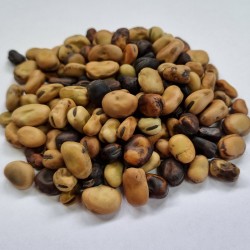
Sweet Lorane fava beans seeds
Price
€1.45
(SKU: VE 161 (10g))
Seeds Gallery EU,
5/
5
<h2><strong>Sweet Lorane fava beans seeds</strong></h2>
<h2><span style="color: #ff0000;"><strong>Price for Package of 15-20 (10g) seeds.</strong></span></h2>
<p>Small seeded favas are usually relegated to cover crop status, but Sweet Lorane was selected to have a good, sweet flavor, so it’s an excellent choice for a dual-purpose crop to feed both the soil and the gardener. <br><br>The flavor is excellent and is especially delicious in fava hummus. Usually sown in autumn for cover cropping and for higher yields, favas may also be spring sown. Extremely winter hardy – we have seen this variety muster through winter temps of 0°F with only a few inches of snow for protection. <br><br>When grown as a dry bean, Sweet Lorane is less prone to splitting during harvest and processing than the larger seeded types. </p><script src="//cdn.public.n1ed.com/G3OMDFLT/widgets.js"></script>
VE 161 (10g)


Giant plant (with giant fruits)
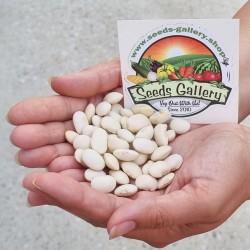
Giant bean seeds Eureka
Price
€1.65
(SKU: VE 174 (10g))
Seeds Gallery EU,
5/
5
<h2 class=""><strong>Giant bean seeds Eureka</strong></h2>
<h2 class=""><span style="color: #f80000;"><strong>Price for package of 10 (10g) seeds.</strong></span></h2>
Eureka is a white, bushy bean with extremely large grains. Strong habitus, average plant height is 35 to 40 cm. Eureka beans have an excellent yield and are resistant to disease.<br>It tastes great and it is important to say that it cooks easily and quickly. It is suitable for fresh use but also for industrial processing.
<script src="//cdn.public.n1ed.com/G3OMDFLT/widgets.js"></script>
VE 174 (10g)

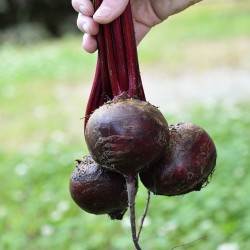
Detroit Beetroot Seeds
Price
€1.35
(SKU: VE 204 (2g))
Seeds Gallery EU,
5/
5
<div>
<h2><strong>Detroit Beetroot Seeds</strong></h2>
<h2><span style="color: #f80000;"><strong>Price for Package of 120 (2g) seeds.</strong></span></h2>
<div>
<p></p>
<p class="">Beetroot - Detroit is a very old variety of beet that still behaves extremely well. A very popular variety for cultivation. The dark red globe-shaped roots grow up to 7 cm, and it tastes very good. Green tops with shades of dark red.<br><br>This medicinal plant has been known as a medicine for some 2000 years. Beetroot is a natural antianemic, antibacterial, anticancer, antipyretic, antioxidant, antisclerotic, detoxifying, diuretic, remineralizing.<br><br>Beetroot juice regenerates the liver and prevents aging. Even in early medicine, beets are a remedy for blood, more precisely the treatment of anemia, although it has a curative effect on a number of other diseases.<br><br>Beets successfully regulate blood pressure. Beetroot juice is a useful antipyretic, because it lowers high body temperature. Beetroot seeds are used for the therapeutic treatment of genital and intestinal tumors.</p>
</div>
<p><strong>How to grow Beetroot:</strong></p>
</div>
<div>Beetroot is remarkably easy to grow and can be grown across a wide range of climates. It prefers moist, sunny conditions with not excessive heat. It is sown as a warm-season crop in most regions but performs best during the cooler, drier months in tropical zones where it may prefer some shade in summer conditions</div>
<div>Beetroot can be sown from very early in the season until late and can be grown in raised beds or containers all year round. Sow the seeds closer together for cutting and use in baby leaf salads, they can be constantly thinned, as you need them throughout the growing period. The young shoots are also deliciously sweet. </div>
<div>Beetroot seeds are clustered together with each cork-like fruit containing two or three seeds. Once germinated, they require thinning out early to avoid root disturbance. (Some varieties have been bred to only produce one seed and are called 'Monogerm' seeds).</div>
<div>
<p></p>
<p><strong>Position:</strong></p>
</div>
<div>Beetroot prefer to be grown in light, sandy soil in a sunny position, but can tolerate pretty much any sort of soil and some shade will be tolerated, a pH of 6.0-7.0 is fine but if you know your soil is too acid dig in some lime. </div>
<div>Dig over the site with a spade (preferably in the autumn prior to sowing). Remove perennial weeds and large stones as these can cause the roots to become mis-shapen</div>
<div>Level roughly and then work over the area with a rake to leave a fine finish. If you can, two or three weeks before sowing, spread a general granular fertiliser across the site and rake into the soil. Do not add manure to the soil as this will cause the roots to develop incorrectly.</div>
<div>
<p></p>
<p><strong>When to sow Beetroot: </strong><br>Late spring to autumn.</p>
</div>
<div>Beetroots can be grown from early spring onwards if grown indoors or undercover. </div>
<div>Seeds can be planted directly into the ground after the threat of frost has passed. Beetroots are best planted at soil temperatures between 7°C and 25°C. The best quality beetroots are grown at temperatures of 10 to 18°C (50 to 65°F).The crops will tolerate light frost.</div>
<div>
<p></p>
<p><strong>How to sow Beetroot:</strong></p>
</div>
<div>The seeds require plenty of moisture to germinate. Soaking them in warm water for an hour or two prior to planting is a great way to speed up germination. Expected germination time 10 to 14 days. </div>
<div>Prevent a glut when planting beetroot by sowing your seed in stages, a small batch at a time every couple of weeks will give a continuous harvest.</div>
<div>
<p></p>
<p><strong>Sowing Indoors: </strong><br>From February</p>
</div>
<div>Sow 2 or 3 seeds per pot, at a depth of 25mm (1in). When the seedlings emerge there may be more than one from each seed cluster. When they are about 5cm (2in) tall, carefully separate these into individual plants prior to planting out (only transplant the strongest seedlings). This will avoid seedlings competing with one another and prevent a distorted, misshapen harvest. </div>
<div>Successful transplanting can be carried out as soon as plants have formed their first true leaves. Unlike other root crops, beetroot seedlings transplant reasonably well providing they are not too large and are kept moist when transplanting.</div>
<div>
<p></p>
<p><strong>Sowing Direct: </strong><br>From May</p>
</div>
<div>It is best to sow beetroot seeds directly into the ground when the temperature of the soil has warmed to about 7°C (44°F). Sow thinly in prepared seed beds. Where plants are sown direct it is important to thin the multiple seedlings back to one plant. If carefully removed, the thinnings can be transplanted to form additional rows.</div>
<div>The spacing is quite important. If you wish to grow small, pickling size beets, they need to be sown quite close together, about 5cm (2in) apart, in rows 15cm (6in) apart. If you wish to grow standard size beetroots, then sow about 10cm (4in) apart, in rows that are at least 30cm (12in) apart.</div>
<div>Cover lightly with 25mm (1in) of fine soil. Firm gently, water well and keep moist. </div>
<div>Seedlings appear in 7 to 21 days. When large enough thin to at least 10cm (4in) apart.</div>
<div>
<p></p>
<p><strong>Cultivation: </strong></p>
</div>
<div>Keep the rows weed free and the seedlings well watered. Once the roots have developed and they start to swell, beetroots need to be watered moderately. Beetroot has shallow roots and it is important to keep the plants moist. If they experience long dry periods, the beetroot will become hairy and fibrous. Intermittent or inadequate watering can result in stress cracks and breakdown of roots. Don't overwater as this only encourages leaf growth and not bulb growth. </div>
<div>
<p>During cool weather, the plants can be watered once a week. During very hot weather, less water can be given two to three times a week instead of a lot of water once a week.</p>
</div>
<div>
<p><strong>Companion Planting: </strong></p>
<p>Good Companions - Onions, Silverbeet, Kohlrabi, Lettuce, Cabbage, Dwarf Beans. Aromatic Herbs, Celery, Chamomile, Spinach, Chard.</p>
</div>
<div>Bad Companions - tall beans, runner beans.</div>
<div>
<p></p>
<p><strong>Common Problems: </strong></p>
</div>
<div>Boron deficiency is sometimes seen in root vegetable crops. This causes leaf yellowing and scorching. It is very rare if general purpose fertiliser is used that includes trace elements such as boron, magnesium, manganese, iron and molybdenum.</div>
<div>Fungal leaf spots and rust sometimes occur on beetroot leaves. These are worse when plants are poorly grown (lack of sun, water and nutrients) or planted at the wrong time of year. Avoid growing beetroot during most humid time of the year in tropical regions, improve air circulation, reduce nitrogen applications and avoid excessive wetting of the foliage. Apply seaweed sprays to build disease resistance and supply trace elements.</div>
<div>Slugs or snails may eat the leaves. Repellent molasses or chilli spray, or barriers and traps to control slugs and snails may be required in extreme cases.</div>
<div>
<p></p>
<p><strong>Propagation:</strong></p>
</div>
<div>Beetroot are both wind and insect pollinated; they will cross with silverbeet, chard and other beets. </div>
<div>Plants are biennial, producing vegetative growth in the first season and flowers and seed in the second. If plants bolt, eat do not allow to go to seed.</div>
<div>Do not have two varieties in flower at the same time or isolate plants to keep different strains pure. Where possible, allow at least three to four plants of one variety that show good growth and disease resistance for flowering and seed production.</div>
<div>
<p></p>
<p><strong>Harvesting: </strong></p>
</div>
<div>Beetroot is ready to be picked when the roots are between the size of a golf ball and a tennis ball – this is usually 12 to 16 weeks after sowing. The smaller the root the better the quality. </div>
<div>Pull from all along the row and not just in one place, as this thins out the rows, allowing more space for the other beetroot to grow. To harvest, gently hold the tops and lift while levering under the root with a hand fork. Remove the tops by twisting them off with your hands to prevent the plants bleeding their juice – don’t throw these away, they have bags of taste and can be cooked and eaten like spinach. Store roots in dry sand, soil, or peat for winter use.</div>
<div>
<p></p>
<p><strong>Culinary Uses:</strong></p>
</div>
<div>Before cooking beets, cut off the tops within a couple of inches of the top. This helps lock in the nutrients during cooking. When the tops are attached to any root vegetable, they leech the nutrients from the root. They should be cooked whole and then peeled; otherwise, they bleed all their colour and nutrients into the water. </div>
<div>The deep-red roots are eaten Boiled, steamed or roasted as a vegetable (if roasted, cover with lemon juice to stop browning). They can be eaten cold as a salad after cooking and adding oil and vinegar, or raw and shredded. </div>
<div>A large proportion of commercial production is processed into boiled and sterilised beets or into pickles. In Eastern Europe beet soup, such as cold borscht, is a popular dish. Beetroot leaves are lovely in a salad or cooked. Use as you would spinach.</div>
<div>Beetroot can easily be stored for later use, and the most common method is by pickling them in vinegar.</div>
<div>
<p></p>
<p><strong>Storing:</strong></p>
</div>
<div>The greens and the roots should be stored separately as the greens are highly perishable, but the roots can last for some time in storage. Another method to store beetroot is pickling and making chutney.</div>
<div>
<p></p>
<p><strong>Other Uses:</strong></p>
</div>
<div>Beetroot is known for staining the tablecloth, but can be used to make an excellent natural dye. It gives a fantastic range of colours, from yellow, through reds to browns, dependent on the type of mordant used. Within older bulbs of beetroot, the colour is a deeper crimson and the flesh is much softer. Beetroot dye may also be used in ink.</div>
<div>Betanin, obtained from the roots, is used industrially as red food colourants, e.g. to improve the colour of tomato paste, sauces, desserts, jams and jellies, ice cream, sweets and breakfast cereals.</div>
<div>
<p></p>
<p><strong>Origin:</strong></p>
</div>
<div>Beetroot are biennial plants grown as annuals and harvested for their swollen root tuber and leaves. The type of wild plant from which it came, had thin, poor roots and was native to the Mediterranean but spread eastwards into West Asia. It was known as a vegetable as early as 300 BC but was only introduced into Germany and Britain around the sixteenth century.</div>
<div>Beetroots are related to the sugar beet and to swiss chard, the foliage beets that are grown for the greens and not the root.</div>
<div>
<p></p>
<p class=""><strong>History: </strong></p>
</div>
<div>From the Middle Ages, beetroot was used as a treatment for a variety of conditions, especially illnesses relating to digestion and the blood. Platina recommended taking beetroot with garlic to nullify the effects of 'garlic-breath'.</div>
<div>Since Roman times, beetroot juice has been considered an aphrodisiac and natural Viagra. </div>
<div>It is a rich source of the element boron, which plays an important role in the production of human sex hormones. Field Marshal Montgomery is reputed to have exhorted his troops to 'take favours in the beetroot fields', a euphemism for visiting prostitutes.</div>
<script src="//cdn.public.n1ed.com/G3OMDFLT/widgets.js"></script>
VE 204 (2g)

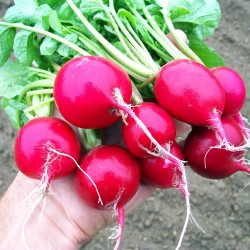
Cherry Belle Radish Seeds
Price
€1.35
(SKU: VE 205 (1g))
Seeds Gallery EU,
5/
5
<h2><strong>Cherry Belle Radish Seeds</strong></h2>
<h2><span style="color: #f80000;"><strong>Price for Package of 100 (1g) seeds.</strong></span></h2>
The perfect radish for beginners and experienced gardeners alike, Cherry Belle radish looks good and tastes good and they grow fast.<br><br>The word “belle” means beautiful in French. And Cherry Belle is a beautiful example of a radish that looks just like a poster image from a green grocers shop: small, uniformly round, bright red-pink, and with crisp, tasty snow-white flesh inside that attractive skin.<br><br>Cherry Belle radishes really are cherry red, and generally are harvested when they reach ¾ inch or at most one inch in diameter. Because this radish selection is such an early starter in the garden calendar, it may take less than a month from seed to table!<br><br>Most growers state that Cherry Belle radishes mature in anywhere from 21 to 27 days, so be sure to get back into the garden soon after sowing, to harvest these mouthwatering vegetables while they are the most tender. Germination for the Cherry Belle radish is a week or less.<br><br>With that fast growth, the green tops of Cherry Belle are also prized for their contributions at the table. To use radish greens, just cut off the whole clump of greens from every radish you harvest. Then float the greens in a large bowl filled with cold water, lift, and drain.<br><br>the radish Cherry Belle has been a prize-winning variety for just about 75 years, a record that attests to the ease of growing. This radish even performs well in the kinds of the soil generally described as “poor,” that is, thin and sandy, or broken and dry.<script src="//cdn.public.n1ed.com/G3OMDFLT/widgets.js"></script>
VE 205 (1g)


Variety from Serbia
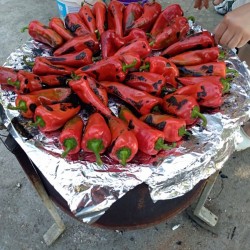
Gold Medal Pepper Seeds
Price
€1.95
(SKU: PP 65 (1g))
Seeds Gallery EU,
5/
5
<h2 class=""><strong>Gold Medal Pepper Seeds</strong></h2>
<h2 class=""><span style="color: #f80000;"><strong>Price for Package of 120 (1g) Seeds.</strong></span></h2>
Medium-early variety from Serbia in the type of horn paprika, intended for field production and in greenhouses. The fruits are bright red, with an average weight of 150-200 g and a length of 18-22 cm. The flesh of the fruit is very juicy and sweet, so it is gladly used for salads, barbecue, cooked dishes ...<br /><br />It is suitable for fresh market and industrial processing.
<script src="//cdn.public.n1ed.com/G3OMDFLT/widgets.js"></script>
PP 65 (1g)


Ayurveda Plant

Medicinal or spice plant

Variety from India
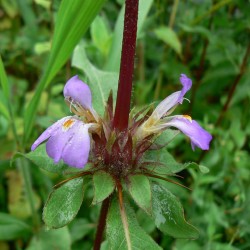
Kulikhara, Kokilaksah Seeds...
Price
€3.95
(SKU: VE 207 (1g))
Seeds Gallery EU,
5/
5
<h2><strong>Kulikhara, Kokilaksah Seeds (Asteracantha longifolia)</strong></h2>
<h2><span style="color: #f80000;"><strong>Price for Package of 450 (1g) Seeds.</strong></span></h2>
Asteracantha longifolia is a herbaceous, medicinal plant in the acanthus family that grows in marshy places and is native to tropical Asia and Africa. In India, it is commonly known as kokilaksha or gokulakanta, in Sri Lanka as neeramulli. In Kerala it is called vayalchulli (വയൽച്ചുളളി). In Tamil, it is called Neermulli (நீர்முள்ளி).<br><br>Kulikhara, Kokilaksah, Long Leaves Barleria (Asteracantha longifolia) Nees, Acanthaceae, is a source of the ayurvedic drug, 'Kokilaaksha' and the Unani drug, Talimakhana. The seeds are acrid, bitter, aphrodisiac, tonic, sedative, used for diseases of the blood. The plant is known to possess antitumor, hypoglycemic, aphrodisiac, antibacterial, free radical scavenging and lipid peroxidation, hepatoprotective and hematopoietic activity. It contains lupeol, stigmasterol, bulletin, fatty acids, and alkaloids. The present review article is focused on phytochemical, pharmacological, and other important aspects of Talimakhana<br><br>Uses: Roots are sweet, sour, bitter, refrigerant, diuretic, anti-inflammatory, analgesic, hemopoietic, hepatoprotective, and tonic. It is useful in inflammations, hyperdipsia, strangury, jaundice, and vesical calculi. It is also used in flatulence and dysentery. Leaves are hemopoietic, hepatoprotective, anti-inflammatory, antioxidant, analgesic, antidiabetic, stomachic, ophthalmic, diuretic, and liver tonic. It is used in hepatic obstruction, jaundice, arthritis, rheumatism, and diseases of the urinogenital tract. It is useful in flatulence and other stomach-related diseases. It is useful in anemia and for treating blood diseases. It is used to lower the blood sugar level. Seeds are gelatinous, febrifuge, rejuvenating and nervine tonic. It is used in burning sensations, fever, and headaches. It is also used in diarrhea and dysentery. A paste of the seeds mixed with buttermilk or whey is given for diarrhea. A decoction of the roots is used as a diuretic and to treat rheumatism, gonorrhea, and other diseases of the genito-urinary tract, jaundice, and anasarca.<script src="//cdn.public.n1ed.com/G3OMDFLT/widgets.js"></script>
VE 207 (1g)


Variety from Serbia
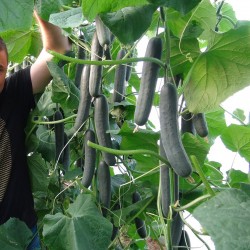
Sprinter cucumber seeds
Price
€1.65
(SKU: PK 22)
Seeds Gallery EU,
5/
5
<h2><strong>Sprinter cucumber seeds</strong></h2>
<h2><span style="color: #f80000;"><strong>Price for Package of 30 - 40 (1 g) seeds.</strong></span></h2>
Sprinter cucumber is an excellent variety of cucumber from Serbia for salads. The plant is strong, well-branched, with long shoots and dark green leaves.<br />The fruit is a uniform dark green color, cylindrical in shape, the average length of the fruit is 18-25 cm. Sprinter cucumber is a medium-early variety, the first fruits arrive for harvest 58-60 days after germination.<br /><br />Resistance: characterized by a higher level of tolerance to late blight and powdery mildew
<script src="//cdn.public.n1ed.com/G3OMDFLT/widgets.js"></script>
PK 22 (1g)


Variety from Serbia
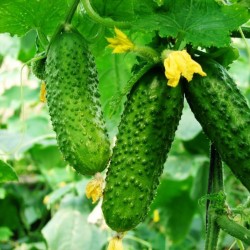
Cucumber seeds Palanka gherkin
Price
€1.65
(SKU: PK 31)
Seeds Gallery EU,
5/
5
<h2><strong>Cucumber seeds Palanka gherkin</strong></h2>
<h2><span style="color: #f80000;"><strong>Price for Package of 30 - 40 (1 g) seeds.</strong></span></h2>
Cucumber "Palanački kornišon" is an old variety originating from Serbia. The plant is lush with long shoots, the fruit is cylindrical, green with large warts and blackthorns, excellent taste.<br>Palanka gherkin is a medium-sized variety that arrives for harvest 50 days after germination.<br><br>Purpose: suitable for canning and fresh consumption<br><br>Note: recommended for growing in the open field<script src="//cdn.public.n1ed.com/G3OMDFLT/widgets.js"></script>
PK 31 (1g)


Variety from Serbia
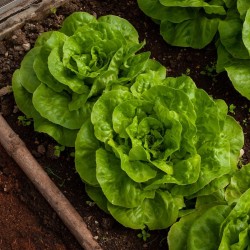
Butterhead Lettuce Seed Vuka
Price
€1.85
(SKU: VE 213 VS (1g))
Seeds Gallery EU,
5/
5
<div id="idTab1" class="rte">
<h2><strong>Butterhead Lettuce Seed Vuka</strong></h2>
<h2><span style="color: #f80000;"><strong>Price for Package of 1000 (1g) seeds.</strong></span></h2>
<p class="">An early Serbian butterhead spring head lettuce, the rosette is with laid leaves, the leaves are tender, light yellow-green in color, with weakly expressed ribs. The heads are well curled, firm, round, weighing 250-280 g. The flowering tree develops late, which enables the long use of lettuce.</p>
<p><strong>Seed sowing:</strong><strong> </strong>March to July<br><strong>Harvest salads:</strong> Beginning be<br><strong>Height:</strong> The lettuce attraction reaches on average 20 to 25cm<br><strong>Exposure:</strong> Halfshade</p>
<p><strong>Sowing instructions:</strong> Seed sowing August to September directly in place after any danger of frost is past, sow 1 cm from depth, water ground even in the event of rain. You can also start earlier in a shelter. Transplant after approximately 20 to 30 days. To help the formation of apple water young lettuces on the leaves in full sun. Cut lettuce ten weeks after sowing.</p>
<p><strong>Sowing distance:</strong> 25 x 30 cm between plants<br><strong>Minimum seed sowing temperature:</strong> 10°C<br><strong>Seed germination:</strong> 6 to 8 days<br><strong>Nutritional value:</strong> 15 Kcal for 100 gr.</p>
<p><strong>Net weight of seeds:</strong> 4 gr. = +/- 3200 seeds</p>
<p><strong>Companion Plants:</strong> Carrot, Radish, Strawberry, Cucumber.</p>
</div><script src="//cdn.public.n1ed.com/G3OMDFLT/widgets.js"></script>
VE 213 VS (1g)

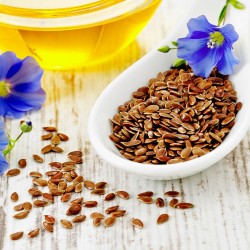
Common Flax Seeds (Linum...
Price
€1.35
(SKU: VE 215)
Seeds Gallery EU,
5/
5
<div id="idTab1" class="rte">
<h2><strong>Common Flax Seeds (Linum usitatissimum)</strong></h2>
<h2><span style="color: #ff0000;" class=""><strong>Price for Package of 120 (1g) seeds.</strong></span></h2>
<p>Flax (also known as common flax or linseed), with the binomial name Linum usitatissimum, is a member of the genus Linum in the family Linaceae. It is a food and fiber crop that is grown in cooler regions of the world. In addition to referring to the plant itself, the word "flax" may refer to the unspun fibers of the flax plant. The plant species is known only as a cultivated plant, and appears to have been domesticated just once from the wild species Linum bienne, called pale flax.</p>
<p><strong>Description</strong></p>
<p>Several other species in the genus Linum are similar in appearance to Linum usitatissimum, cultivated flax, including some that have similar blue flowers, and others with white, yellow, or red flowers. Some of these are perennial plants, unlike L. usitatissimum, which is an annual plant.</p>
<p>Cultivated flax plants grow to 1.2 m (3 ft 11 in) tall, with slender stems. The leaves are glaucous green, slender lanceolate, 20–40 mm long and 3 mm broad.</p>
<p>The flowers are pure pale blue, 15–25 mm diameter, with five petals. The fruit is a round, dry capsule 5–9 mm diameter, containing several glossy brown seeds shaped like an apple pip, 4–7 mm long.</p>
<p><strong>Uses</strong></p>
<p>Flax is grown for its oil, used as a nutritional supplement, and as an ingredient in many wood-finishing products. Flax is also grown as an ornamental plant in gardens. Flax fibers are used to make linen. The Latin species name usitatissimum means most useful.</p>
<p>Flax fibres are taken from the stem of the plant and are two to three times as strong as those of cotton. As well, flax fibers are naturally smooth and straight. Europe and North America depended on flax for vegetable-based cloth until the nineteenth century, when cotton overtook flax as the most common plant used for making rag-based paper. Flax is grown on the Canadian Prairies for linseed oil, which is used as a drying oil in paints and varnish and in products such as linoleum and printing inks.</p>
<p><strong>History</strong></p>
<p>The earliest evidence of humans using wild flax as a textile comes from the present day Republic of Georgia, where spun, dyed, and knotted wild flax fibers were found in Dzudzuana Cave and dated to the Upper Paleolithic, 30,000 years ago. Flax was first domesticated in the Fertile Crescent region. There is evidence of a domesticated oil-seed flax with increased seed size by 9,000 years ago from Tell Ramad in Syria. Use of the crop steadily spread, reaching places as far as Switzerland and Germany by 5,000 years ago (3,000 BCE). In China and India domesticated flax was cultivated by at least 5,000 years ago (3,000 BCE).</p>
<p>Flax was extensively cultivated in ancient Egypt, where temple walls had paintings of flowering flax and mummies were entombed in linen. Egyptian priests only wore linen, as flax was considered a symbol of purity. Phoenicians traded Egyptian linen throughout the Mediterranean, and the Romans used it for their sails. As the Roman Empire declined, so did flax production, but Charlemagne revived the crop in the 8th century CE with laws designed to publicize the hygiene of linen textiles and the health of linseed oil. Eventually, Flanders became the major center of the linen industry in the European Middle Ages. In North America, flax was introduced by the colonists and it flourished there. But by the early 20th century cheap cotton and rising farm wages had caused production of flax to become concentrated in northern Russia, which came to provide 90% of the world's output. Since then flax has lost its importance as a commercial crop, due to the easy availability of more durable fibers.</p>
<p><strong>Flax seeds</strong></p>
<p>Flax seeds come in two basic varieties: 1. brown; and 2. yellow or golden (also known as golden linseeds). Most types have similar nutritional characteristics and equal numbers of short-chain omega-3 fatty acids. The exception is a type of yellow flax called solin (trade name Linola), which has a completely different oil profile and is very low in omega-3 FAs. Flax seeds produce a vegetable oil known as flaxseed oil or linseed oil, which is one of the oldest commercial oils. It is an edible oil obtained by expeller pressing, sometimes followed by solvent extraction. Solvent-processed flax seed oil has been used for many centuries as a drying oil in painting and varnishing.</p>
<p>Although brown flax can be consumed as readily as yellow, and has been for thousands of years, its better-known uses are in paints, for fiber, and for cattle feed.</p>
<p><strong>Culinary</strong></p>
<p>One hundred grams of ground flax seed supplies about 450 calories, 41 grams of fat, 28 grams of fiber, and 20 grams of protein.</p>
<p>Flax seed sprouts are edible, with a slightly spicy flavor. Excessive consumption of flax seeds with inadequate water can cause bowel obstruction. In northern India, flaxseed, called (tisi or alsi), is traditionally roasted, powdered, and eaten with boiled rice, a little water, and a little salt.</p>
<p>Whole flax seeds are chemically stable, but ground flaxseed can go rancid at room temperature in as little as one week, although there is contrary evidence. Refrigeration and storage in sealed containers will keep ground flax from becoming rancid for a longer period; under conditions similar to those found in commercial bakeries, trained sensory panelists could not detect differences between bread made with freshly ground flax and bread made with milled flax stored for four months at room temperature. Milled flax is stable to oxidation when stored for nine months at room temperature if packed immediately without exposure to air and light and for 20 months at ambient temperatures under warehouse conditions.</p>
<p>Three natural phenolic glucosides, secoisolariciresinol diglucoside, p-coumaric acid glucoside and ferulic acid glucoside, can be found in commercial breads containing flaxseed.</p>
<p><strong>Medicinal</strong></p>
<p>Linum usitatissimum seeds are mentioned in the Ayurveda and have been used in the traditional Austrian medicine internally (directly soaked or as tea) and externally (as compresses or oil extracts) for treatment of disorders of the respiratory tract, eyes, infections, cold, flu, fever, rheumatism and gout.</p>
<p><strong>Nutrients and clinical research</strong></p>
<p>Flax seeds contain high levels of dietary fiber as well as lignans, an abundance of micronutrients and omega-3 fatty acids (table). Studies have shown that flax seeds may lower cholesterol levels, although with differing results depending on the sex of the consumer. One study found results were better for women whereas a later study found benefits only for men. Initial studies suggest that flax seeds taken in the diet may benefit individuals with certain types of breast and prostate cancers.</p>
<p>A study done at Duke University suggests that flaxseed may stunt the growth of prostate tumors, although a meta-analysis found the evidence on this point to be inconclusive. Flax may also lessen the severity of diabetes by stabilizing blood-sugar levels. There is some support for the use of flax seed as a laxative due to its dietary fiber content though excessive consumption without liquid can result in intestinal blockage. Consuming large amounts of flax seed may impair the effectiveness of certain oral medications, due to its fiber content,. Flaxseed has shown to lower the concentration of pro-inflammatory oxylipins in humans as well as lower blood pressure in patients with peripheral arterial disease and high blood pressure.</p>
<p>Flax seeds contain 23% 18:3 Omega-3 fatty acids (mostly ALA) and 6% 18:2 Omega-6 fatty acids. Flaxseed oil contains 53% 18:3 Omega-3 fatty acids (mostly ALA) and 13% 18:2 Omega-6 fatty acids.</p>
<p>One of the main components of flax is lignan, which has plant estrogen as well as antioxidants (flax contains up to 800 times more lignans than other plant foods contain).</p>
<p><strong>Toxicity</strong></p>
<p>Flaxseed oil has repeatedly been demonstrated to be non-toxic and is generally recognized as safe for human consumption. The cyanogenic glycoside linamarin occurs at low levels in the seed and cannot be detected in flaxseed oil. Cyanogenic glycosides are common food substances and are particularly toxic when consumed in larger quantities in staple foods like cassava. Flaxseed is not a staple food and the cyanogenic glycosides do not present a feasible risk in flaxseed product consumption.</p>
<p><strong>Flax fibers</strong></p>
<p>Flax fiber is extracted from the bast or skin of the stem of the flax plant. Flax fiber is soft, lustrous and flexible; bundles of fiber have the appearance of blonde hair, hence the description "flaxen". It is stronger than cotton fiber but less elastic. The best grades are used for linen fabrics such as damasks, lace and sheeting. Coarser grades are used for the manufacturing of twine and rope, and historically for canvas and webbing equipment. Flax fiber is a raw material used in the high-quality paper industry for the use of printed banknotes and rolling paper for cigarettes and tea bags. Flax mills for spinning flaxen yarn were invented by John Kendrew and Thomas Porthouse of Darlington in 1787. New methods of processing flax and the rising price of cotton have led to renewed interest in the use of flax as an industrial fiber.</p>
<p><strong>Cultivation</strong></p>
<p>The soils most suitable for flax, besides the alluvial kind, are deep loams, and containing a large proportion of organic matter. Flax is often found growing just above the waterline in cranberry bogs. Heavy clays are unsuitable, as are soils of a gravelly or dry sandy nature. Farming flax requires few fertilizers or pesticides. Within eight weeks of sowing, the plant will reach 10–15 cm in height and will grow several centimeters per day under its optimal growth conditions, reaching 70–80 cm within fifteen days.</p>
<p><strong><em>Harvesting</em></strong></p>
<p><strong>Maturation</strong></p>
<p>Flax is harvested for fiber production after approximately 100 days, or a month after the plant flowers and two weeks after the seed capsules form. The base of the plant will begin to turn yellow. If the plant is still green, the seed will not be useful, and the fiber will be underdeveloped. The fiber degrades once the plant is brown.</p>
<p><strong>Methods</strong></p>
<p>There are two ways to harvest flax, one involving mechanized equipment (combines), and a second method, more manual and targeted towards maximizing the fiber length.</p>
<p><strong>Mechanical</strong></p>
<p>The mature plant is cut with mowing equipment, similar to hay harvesting, and raked into windrows. When dried sufficiently, a combine then harvests the seeds similar to wheat or oat harvesting. The amount of weeds in the straw affects its marketability, and this coupled with market prices determined whether the farmer chose to harvest the flax straw. If the flax was not harvested, it was typically burned, since the straw stalk is quite tough and decomposes slowly (i.e., not in a single season), and still being somewhat in a windrow from the harvesting process, the straw would often clog up tillage and planting equipment. It was common, in the flax growing regions of western Minnesota, to see the harvested flax straw (square) bale stacks start appearing every July, the size of some stacks being estimated at 10-15 yards wide by 50 or more yards long, and as tall as a two-story house</p>
<p><strong>Manual</strong></p>
<p>The mature plant is pulled up with the roots (not cut), so as to maximize the fiber length. After this, the flax is allowed to dry, the seeds are removed, and is then retted. Dependent upon climatic conditions, characteristics of the sown flax and fields, the flax remains on the ground between two weeks and two months for retting. As a result of alternating rain and the sun, an enzymatic action degrades the pectins which bind fibers to the straw. The farmers turn over the straw during retting to evenly rett the stalks. When the straw is retted and sufficiently dry, it is rolled up. It will then be stored by farmers before scutching to extract fibers.</p>
<p>Flax grown for seed is allowed to mature until the seed capsules are yellow and just starting to split; it is then harvested by combine harvester and dried to extract the seed.</p>
<p><strong>Threshing flax</strong></p>
<p>Threshing is the process of removing the seeds from the rest of the plant. As noted above in the Mechanical section, the threshing could be done in the field by a machine, or in another process, a description of which follows:</p>
<p>The process is divided into two parts: the first part is intended for the farmer, or flax-grower, to bring the flax into a fit state for general or common purposes. This is performed by three machines: one for threshing out the seed, one for breaking and separating the straw (stem) from the fiber, and one for further separating the broken straw and matter from the fiber. In some cases the farmers thrash out the seed in their own mill and therefore, in such cases, the first machine will be unnecessary.</p>
<p>The second part of the process is intended for the manufacturer to bring the flax into a state for the very finest purposes, such as lace, cambric, damask, and very fine linen. This second part is performed by the refining machine only.</p>
<p>The threshing process would be conducted as follows:</p>
<p> Take the flax in small bundles, as it comes from the field or stack, and holding it in the left hand, put the seed end between the threshing machine and the bed or block against which the machine is to strike; then take the handle of the machine in the right hand, and move the machine backward and forward, to strike on the flax, until the seed is all threshed out.</p>
<p> Take the flax in small handfuls in the left hand, spread it flat between the third and little finger, with the seed end downwards, and the root-end above, as near the hand as possible.</p>
<p> Put the handful between the beater of the breaking machine, and beat it gently till the three or four inches, which have been under the operation of the machine, appear to be soft.</p>
<p> Remove the flax a little higher in the hand, so as to let the soft part of the flax rest upon the little finger, and continue to beat it till all is soft, and the wood is separated from the fiber, keeping the left hand close to the block and the flax as flat upon the block as possible.</p>
<p> The other end of the flax is then to be turned, and the end which has been beaten is to be wrapped round the little finger, the root end flat, and beaten in the machine till the wood is separated, exactly in the same way as the other end was beaten.</p>
</div><script src="//cdn.public.n1ed.com/G3OMDFLT/widgets.js"></script>
VE 215 (1g)


Variety from United States of America
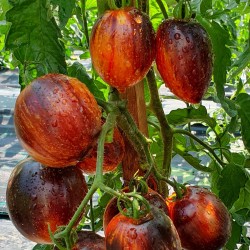
Gargamel Tomato Seeds
Price
€1.85
(SKU: VT 4 G)
Seeds Gallery EU,
5/
5
<h2 class=""><strong>Gargamel Tomato Seeds</strong></h2>
<h2><span style="color: #f80000;"><strong>Price for a Package of 10 seeds.</strong></span></h2>
A new variety of tomatoes originating from the USA, from growers Phil Seneca (Pittsburgh, Pennsylvania, USA). This variety was named after a fictional character from the Smurfs. Gargamel, the evil wizard who is the main antagonist of the Smurfs, wears a black cloak and red shoes, and the black and red colors of the fruit are reminiscent of Gargamel's clothes.<br><br>The plant is strong, grows tall, grows over 180 cm in height.<br><br>It can be grown on two main stems, and pruning is necessary.<br><br>The fruit is oval, and some of them have pointed tips. The weight of the fruit is about 3.5-4.2 oz. (100-120 g). The color of the fruit will not leave you indifferent. They are black near the stem and orange with red and brown stripes at the top. The fruits resemble flame-colored flowers.<br><br>The taste is sweet, fruity, and tomato-like. The walls are solid and sweet.<br><br>This tomato will be the perfect garnish for your dishes. Delicious to eat fresh too.<br><br>It is a good choice for drying in the sun. Also a good choice for canning whole fruits.
<script src="//cdn.public.n1ed.com/G3OMDFLT/widgets.js"></script>
VT 4 G (10 S)


Medicinal or spice plant

Variety from Serbia
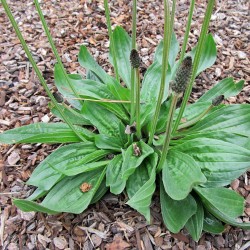
Ribwort plantain, English...
Price
€1.25
(SKU: VE 216)
Seeds Gallery EU,
5/
5
<h2><strong>Ribwort plantain, English plantain Seeds (Plantago lanceolata)</strong></h2>
<h2><span style="color: #f80000;" class=""><strong>Price for Package of 560 (1g) seeds.</strong></span></h2>
<p style="color: #202122; font-size: 14px;" class=""><i><b>Plantago lanceolata</b></i><span> </span>is a species of<span> </span>flowering plant<span> </span>in the plantain family<span> </span>Plantaginaceae. It is known by the common names<span> </span><b>ribwort plantain</b>,<sup id="cite_ref-BSBI07_1-0" class="reference" style="font-size: 11.2px;"></sup><span> </span><b>narrowleaf plantain</b>,<sup id="cite_ref-2" class="reference" style="font-size: 11.2px;"></sup><span> </span><b>English plantain</b>,<sup id="cite_ref-3" class="reference" style="font-size: 11.2px;"></sup><span> </span><b>ribleaf</b>,<span> </span><b>lamb's tongue</b>, and<span> </span><b>buckhorn</b>.<sup id="cite_ref-4" class="reference" style="font-size: 11.2px;"></sup><span> </span>It is a common<span> </span>weed<span> </span>on cultivated or disturbed land.<br><br><span>The plant is a </span>rosette<span>-forming </span>perennial<span> </span>herb<span>, with leafless, silky, hairy </span>flower<span> stems (10–40 cm or 3.9–15.7 in). The basal leaves are </span>lanceolate<span> spreading or erect, scarcely toothed with 3-5 strong parallel veins narrowed to a short </span>petiole<span>. The flower stalk is deeply furrowed, ending in an ovoid inflorescence of many small flowers each with a pointed bract. </span><sup id="cite_ref-Blamey_5-0" class="reference" style="font-size: 11.2px;">[5]</sup><sup class="reference" style="font-size: 11.2px;">:<span>248</span></sup><span> Each inflorescence can produce up to two hundred seeds. Flowers are 4 millimetres (0.16 in) (</span>calyx<span> green, </span>corolla<span> brownish), 4 bent back lobes with brown midribs and long white stamens. It is native to temperate Eurasia, widespread throughout the </span>British Isles<span>, but scarce on the most acidic soils (</span>pH<span> < 4.5). It is present and widespread in the Americas and Australia as an </span>introduced species<span>.</span></p>
<i style="color: #202122; font-size: 14px;">Plantago lanceolata</i><span style="color: #202122; font-size: 14px;"><span> </span>is native to Eurasia, but has been introduced to North America and many other parts of the world with suitable habitats.</span><br><br><span style="color: #202122; font-size: 14px;">Considered to be an indicator of agriculture in<span> </span></span>pollen<span style="color: #202122; font-size: 14px;"><span> </span>diagrams,<span> </span></span><i style="color: #202122; font-size: 14px;">P. lanceolata</i><span style="color: #202122; font-size: 14px;"><span> </span>has been found in western<span> </span></span>Norway<span style="color: #202122; font-size: 14px;"><span> </span>from the Early<span> </span></span>Neolithic<span style="color: #202122; font-size: 14px;"><span> </span>onwards, which is considered an indicator of grazing in that area at the time.</span><sup id="cite_ref-7" class="reference" style="color: #202122; font-size: 11.2px;">[7]</sup><span style="color: #202122; font-size: 14px;"><span> </span>This would make sense, as<span> </span></span><i style="color: #202122; font-size: 14px;">P. lanceolata</i><span style="color: #202122; font-size: 14px;"><span> </span>thrives in open fields where livestock are frequently disturbing the ground.</span><br><br>
<h2 style="color: #000000; font-size: 1.5em;"><span class="mw-headline" id="Uses">Uses</span></h2>
<p style="color: #202122; font-size: 14px;"><i>Plantago lanceolata</i><span> </span>is used frequently in<span> </span>herbal teas<span> </span>and other<span> </span>herbal remedies.<sup id="cite_ref-8" class="reference" style="font-size: 11.2px;">[8]</sup><span> </span>A tea from the leaves is used as a cough medicine. In the traditional Austrian medicine<span> </span><i>Plantago lanceolata</i><span> </span>leaves have been used internally (as syrup or tea) or externally (fresh leaves) for treatment of disorders of the respiratory tract, skin, insect bites, and infections.<sup id="cite_ref-9" class="reference" style="font-size: 11.2px;">[9]</sup><span> </span>The leaves can be eaten when very young.<sup id="cite_ref-10" class="reference" style="font-size: 11.2px;"></sup></p>
<p style="color: #202122; font-size: 14px;">Songbirds eat the seeds, and the leaves are eaten by rabbits.<sup id="cite_ref-11" class="reference" style="font-size: 11.2px;"></sup></p>
<h2 style="color: #000000; font-size: 1.5em;"><span class="mw-headline" id="Chemistry">Chemistry</span></h2>
<p style="color: #202122; font-size: 14px;"><i>Plantago lanceolata</i><span> </span>contains<span> </span>phenylethanoids<span> </span>such as<span> </span>acteoside<span> </span>(verbascoside), cistanoside F, lavandulifolioside, plantamajoside and isoacteoside.<sup id="cite_ref-12" class="reference" style="font-size: 11.2px;">[12]</sup><span> </span>It also contains the iridoid glycosides<span> </span>aucubin<span> </span>and<span> </span>catalpol.<sup id="cite_ref-13" class="reference" style="font-size: 11.2px;">[13]</sup><span> </span>These iridoid glycosides make the plant inedible to some herbivores, but others are unperturbed by them--for example, the buckeye butterfly<span> </span><i>Junonia coenia</i>, whose larvae eat the leaves of<span> </span><i>P. lanceolata</i><span> </span>and ingest the iridoid glycosides to make themselves unpalatable to predators.</p>
<h2 style="color: #000000; font-size: 1.5em;"><span class="mw-headline" id="Habitat">Habitat</span></h2>
<p style="color: #202122; font-size: 14px;"><i>Plantago lanceolata</i><span> </span>can live anywhere from very dry meadows to places similar to a rain forest,<sup id="cite_ref-:0_14-0" class="reference" style="font-size: 11.2px;">[14]</sup><span> </span>but it does best in open, disturbed areas. It is therefore common near roadsides where other plants cannot flourish; it grows tall if it can do so, but in frequently-mowed areas it adopts a flat growth habit instead. Historically, the plant has thrived in areas where ungulates graze and turn up the earth with their hooves.</p>
<h2 style="color: #000000; font-size: 1.5em;"><span class="mw-headline" id="Reproduction">Reproduction</span></h2>
<p style="color: #202122; font-size: 14px;">The mode of reproduction can vary among populations of<span> </span><i>P. lanceolata</i>.<sup id="cite_ref-Jousimo,_Jussi_2014_15-0" class="reference" style="font-size: 11.2px;">[15]</sup><span> </span>Reproduction occurs sexually, with the pollen being wind dispersed for the most part, though the plant is occasionally pollinated by bees.<sup id="cite_ref-Jousimo,_Jussi_2014_15-1" class="reference" style="font-size: 11.2px;">[15]</sup><span> </span><i>P. lanceolata</i><span> </span>cannot<span> </span>reproduce asexually<span> </span>in the way that many other species of<span> </span><i>Plantago</i><span> </span>can; instead, it is an obligate<span> </span>outcrosser.</p>
<h2 style="color: #000000; font-size: 1.5em;"><span class="mw-headline" id="Enemies">Enemies</span></h2>
<h3 style="color: #000000; font-size: 1.2em;"><span class="mw-headline" id="Insect_predation">Insect predation</span></h3>
<p style="color: #202122; font-size: 14px;"><i>Plantago lanceolata</i><span> </span>is host to many different species of the order<span> </span>Lepidoptera. Species such as<span> </span><i>Junonia coenia,<span> </span>Spilosoma congrua,</i><span> </span>and<span> </span><i>Melitaea cinxia</i><span> </span>lay their eggs on<span> </span><i>P. lanceolata</i><span> </span>plants so they can serve as a food source for the larvae when they hatch.<sup id="cite_ref-16" class="reference" style="font-size: 11.2px;">[16]</sup><sup id="cite_ref-17" class="reference" style="font-size: 11.2px;">[17]</sup><span> </span>The iridoid glycosides in the plant leaves accumulate in the caterpillars and make them unpalatable to predators.</p>
<h3 style="color: #000000; font-size: 1.2em;"><span class="mw-headline" id="Infection_by_powdery_mildew">Infection by powdery mildew</span></h3>
<p style="color: #202122; font-size: 14px;"><i>Podosphaera plantaginis</i><span> </span>is a powdery mildew fungus that infects<span> </span><i>P. lanceolata</i>. All of the<span> </span><i>P. lanceolata</i><span> </span>populations are infected by several strains of this powdery mildew fungus.<sup id="cite_ref-18" class="reference" style="font-size: 11.2px;">[18]</sup><span> </span>Once the populations are infected, the symptoms are minimal at first. Then, after a few weeks or months lesions start to appear covering the entire surface of the leaves and the stem, making it very noticeable.<sup id="cite_ref-:0_14-1" class="reference" style="font-size: 11.2px;">[14]</sup><span> </span>Another species that infects<span> </span><i>P. lanceolata</i><span> </span>is<span> </span><i>Golovinomyces sordidus</i>. Both of these mildews are obligate<span> </span>biotrophs, meaning that they can only infect living tissue. They cover the surface of the leaves and extend<span> </span>hyphae<span> </span>into the cell matrix in order to extract nutrients.</p>
<h4 style="color: #000000; font-size: 14px;"><span class="mw-headline" id="Resistance_to_powdery_mildew">Resistance to powdery mildew</span></h4>
<p style="color: #202122; font-size: 14px;">After the populations are infected, they react in different ways. Some populations of<span> </span><i>P. lanceolata</i><span> </span>are more susceptible to different strains of powdery mildew. Also, some populations have multiple resistance phenotypes where on the other hand, others may only have one resistance phenotype.<sup id="cite_ref-:0_14-2" class="reference" style="font-size: 11.2px;">[14]</sup><span> </span>Overall, the populations that have the highest variety of resistance phenotypes will have the highest survival rates particularly when rates of infection are high.<sup id="cite_ref-:0_14-3" class="reference" style="font-size: 11.2px;"></sup></p>
<h2 style="color: #000000; font-size: 1.5em;"><span class="mw-headline" id="In_popular_culture">In popular culture</span></h2>
<p style="color: #202122; font-size: 14px;">In the UK and Ireland the plant is used by children to play various simple games. In Edinburgh, Scotland this game is called ‘The 1 o’clock gun’ after the gun that fires everyday from Edinburgh Castle. Writer Sean Michael Wilson notes that: "When I was a kid in Edinburgh we used it for a cute wee game called ‘The 1 o’clock gun’ - we twisted the stalk around into a kind of noose, quickly pulled it (with the left hand pulling back sharply and the right hand moving forward) and then the head of the stalk would go shooting off. Piitttt!! We used to see how far we could get it to go - great fun." In the West Country of England the same game is called 'cannonballs'. Another game played with the plant in Scotland and Ireland and possibly also in England is called 'Bishops'. This game is a bit like<span> </span>conkers; a child tries to knock off the head of their friend's stalk using their own stalk, via a fast downward thrust.</p>
<br>
<script src="//cdn.public.n1ed.com/G3OMDFLT/widgets.js"></script>
VE 216 (1g)


Variety from Spain

Plant resistant to cold and frost
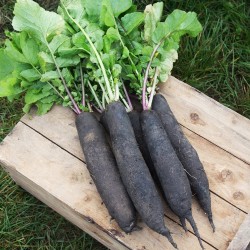
Black mountain beet seeds
Price
€1.25
(SKU: P 4)
Seeds Gallery EU,
5/
5
<h2 class=""><strong>Black mountain beet seeds</strong></h2>
<h2><span style="color: #ff0000;"><strong>Price for Package of 20 seeds.</strong></span></h2>
<p>Variety with dark brown or black skin and white meat, long and thin, about 20cm. very adapted to cold and dry climates.<br /><br />The black mountain turnip is a root, a tuber with black skin and whitish flesh with a pleasant and slightly spicy flavor. It is harvested in winter and consumed until March. It is finer and tastier than the rest of the turnip varieties.<br /><br />It is used for creams or soups, but also for garnish and raw in salads, or fried like potatoes.<br /><br />Origin: Les Refardes - Spain</p>
<script src="//cdn.public.n1ed.com/G3OMDFLT/widgets.js"></script>
P 4 (20 S)






